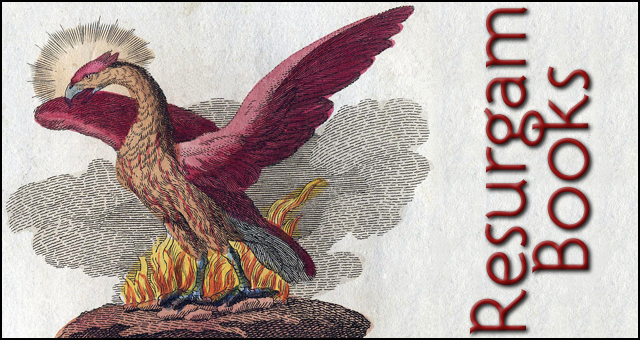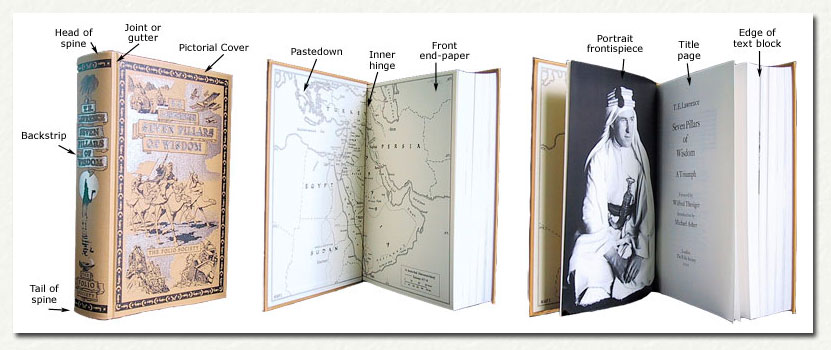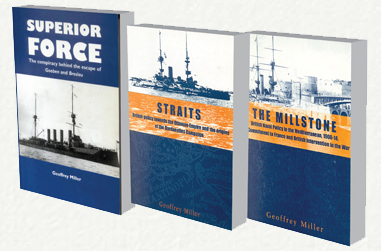 |
|
The Storm of Steel
From the diary of a
German
Storm-Troop Officer
on the Western Front
by
Ernst Jünger
Lieutenant, 73rd Hanoverian Fusilier Regiment
With an introduction by R. H. Mottram
Translated from the original text “In Stahlgewittern” by Basil
Creighton
|
|
 |
|
This is
the July 1929 Third Impression, issued two months after the
First English Edition |
 |
|


Front cover and spine
Further images of this book are
shown below
|
|
 |
|
 |
 |
|
|
|
Publisher and place of
publication |
|
Dimensions in inches (to
the nearest quarter-inch) |
|
London: Chatto & Windus |
|
5 inches wide x 7¾ inches tall |
| |
|
|
|
Edition |
|
Length |
|
July 1929 Third Impression
[the First English Edition was published in London on 23 May 1929;
the second impression followed in June] |
|
[xv] + 319 pages |
| |
|
|
|
Condition of covers |
|
Internal condition |
|
Original red cloth blocked in gilt on the
spine. The covers are
rubbed and faded, particularly around the edges, with variation in colour,
some light surface scratching and a faint circular stain on the front cover. The spine has faded
significantly with total loss of original colour and is quite dull. The spine ends and corners are bumped and
slightly frayed, most noticeably at the tail of the spine, where there are
some minor splits in the cloth. Finally, there are some
indentations along the edges of the boards. |
|
There is a previous owner's name (appears to
be "A. F. Blackie" or "U. F. Blackie") inscribed in ink on the front free
end-paper. The end-papers are browned and discoloured. The text is
very clean throughout on tanned paper (more noticeably tanned in the margins),
though the previous owner has added a few pencilled comments or marked some
passages in pencil in the margin. There is some light scattered foxing.
Pages 115 to 118 are chipped along the fore-edge and page 115/116 also has a
one-inch tear in the margin (please see the image below). The edge
of the text block is grubby and dust-stained, with some spots of foxing, and the bottom edge is not uniformly
trimmed, leaving it quite ragged in places. |
| |
|
|
|
Dust-jacket present? |
|
Other
comments |
|
No |
|
The fading to the cloth (particularly the
spine) is quite common with
the Chatto & Windus Edition but, apart from this and a few minor
defects as outlined above, this is a good example of a 1929 Edition. Despite subsequent
translations being available, I believe that the original Basil Creighton version to be
superior, as Creighton was familiar with both the military terminology
employed and had an understanding of actual conditions on the Western Front. |
| |
|
|
|
Illustrations,
maps, etc |
|
Contents |
|
No illustrations are called
for |
|
Please see below for details |
| |
|
|
|
Post & shipping
information |
|
Payment options |
|
The packed weight is approximately
550 grams.
Full shipping/postage information is
provided in a panel
at the end of this listing.
 |
|
Payment options
:
-
UK buyers: cheque (in
GBP), debit card, credit card (Visa, MasterCard but
not Amex), PayPal
-
International buyers: credit card
(Visa, MasterCard but not Amex), PayPal
Full payment information is provided in a
panel at the end of this listing. |
|
|
 |
|
  |
|
 |
 |
|
The Storm of Steel
Contents
Introduction by R. H. Mottram
The Author's Preface to the English Edition
Orainville
From Bazancourt to Hattonchatel
Les Eparges
Douchy and Monchy
Trench Warfare Day by Day
The Overture to the Somme Offensive
Guillemont
At St. Pierre Vaast
The Somme Retreat
In the Village of Fresnoy
Against Indians
Langemarck
Regnieville
Flanders Again
The Battle of Cambrai
At the Cojeul River
The Great Offensive
English Gains
My Last Storm
|
|
 |
 |
|
The Storm of Steel
Introduction by R. H. Mottram
This book does not pretend to be
fiction, and if it provides entertainment it is on account of its
sterling honesty. This same quality gives it an even higher value as
a document, and it is as such that those will read it who desire to
arrive at any conclusion at once profound and useful about the War.
Its honesty, however, lends this book a further attraction. The
young student of nineteen, who entered the German Army of his own
free will, before the War was a year old, and ' stuck it' in spite
of twenty wounds and the usual disillusionment that we all
experienced, displays the truly adventurous spirit. He is a real
schoolboy, childishly delighted with life, forgivably boasting of
his drinking capacity. He is no more brutal or insensitive than any
other explorer, Arctic or Equatorial. He snipes at English Tommies
or French poilus, and naively claims to have hit them, in a spirit
of sportsmanship which contains no sting for us because we know the
inevitable end. The remarkable thing is that, perhaps on account of
youth, perhaps because of German over-training, possibly because of
some personal quality, he never seems to see that the end was
inevitable. He had no conception of himself as the man of violence,
so familiar in Holy Writ or classic story. He must have been
astonished to find himself described as a ' Hun.' There was nothing
petty or mean about his deliberate destruction of property in the
German retreat of 1917. It was part of the game, and there is no
word against the similar treatment of East Prussia by the Russians.
That was war as he saw it. He had his regrets for friends and
comrades slain all round him, aesthetic appreciation of the
landscape of the Western Front, on which alone he served, bursts of
philosophy which are no worse than most, and very considerable
narrative power. Yet none of these qualities helped him to any
understanding of what war is, and must be. Right to the end, when,
helmetless, his lungs full of blood, he saw the German troops coming
up from the support line, holding up their hands and throwing away
their arms and equipment, he clings to his ideal of military Germany
expressed in the last three pages. Even after that, when writing
this book, he seems to imagine that a sort of Nietzschean-Wagnerian
atmosphere of heroics translated into terms of gas and tanks can be
re-created out of the wreckage of empire. One cannot but respect the
sincere, courageous fighter.
What, then, does this book prove ? There are in it mistakes of fact
due, I think, to the physical effects on his memory of repeated
blows from great pieces of metal. There is the necessary limitation
of one who was never other than a company officer, and who
apparently did not know the very names of the battles into the
forefront of which he was thrust. There are statements of things
seen or done on battlefields, at moments when neither he nor any one
else could be sure of accuracy ; they may be put down as images
evoked by the delirium of battle fever. Yet the whole is stamped
with truth, and has remained untranslated since its first
publication in Germany in 1921. It comes most opportunely now, when
there are signs of an attempt to resurrect the God of War, to
re-gild his jus-bleached armour, and to clothe in some sort of
martial panoply the machinery on which he depends. To discredit such
an attempt, nothing could be better than the diary of this
high-minded devotee of personal combat. He was no middle-aged
civilian, unwillingly taking up arms and finding all his worst
preconceptions abundantly fulfilled. He was nearly as good a
specimen as ever worshipped Mars, and to what did he come ?—to that
unescapable doom that brings to meet violence precisely such
resistance as shall cancel and annul it. On this point the strength
and finality of the testimony cannot be missed. It is to be hoped
that the book will be widely read.
R. H. MOTTRAM.
|
|
 |
 |
|
The Storm of Steel
The Author’s Preface to the
English Edition
IT is not impossible that among the
English readers of this book there may be one who in 1915 and 1916
was in one of those trenches that were woven like a web among the
ruins of Monchy-au-Bois. In that case he had opposite him at that
time the 73rd Hanoverian Fusiliers, who wear as their distinctive
badge a brassard with ' Gibraltar ' inscribed on it in gold, in
memory of the defence of that fortress under General Elliot; for
this, besides Waterloo, has its place in the regiment's history.
At the time I refer to I was a nineteen-year-old lieutenant in
command of a platoon, and my part of the line was easily
recognizable from the English side by a row of tall shell-stripped
trees that rose from the ruins of Monchy. My left flank was bounded
by the sunken road leading to Berles-au-Bois, which was in the hands
of the English ; my right was marked by a sap running out from our
lines, one that helped us many a time to make our presence felt by
means of bombs and rifle-grenades.
I daresay this reader remembers, too, the white tom-cat, lamed in
one foot by a stray bullet, who had his headquarters in
No-man's-land. He used often to pay me a visit at night in my
dugout. This creature, the sole living being that was on visiting
terms with both sides, always made on me an impression of extreme
mystery. This charm of mystery which lay over all that belonged to
the other side, to that danger zone full of unseen figures, is one
of the strongest impressions that the war has left with me. At that
time, before the battle of the Somme, which opened a new chapter in
the history of the war, the struggle had not taken on that grim and
mathematical aspect which cast over its landscapes a deeper and
deeper gloom. There was more rest for the soldier than in the later
years when he was thrown into one murderous battle after another ;
and so it is that many of those days come back to my memory now with
a light on them that is almost peaceful.
In our talks in the trenches, in the dugout, or on the fire-step, we
often talked of the ' Tommy'; and, as any genuine soldier will
easily understand, we spoke of him very much more respectfully than
was commonly the case with the newspapers of those days. There is no
one less likely to disparage the lion than the lion-hunter.
Indeed, the landscape in which we lived at that time had something
about it of primeval Africa, with two mighty forces of nature locked
in conflict there. It was only now and again that one caught sight
of a brownish-yellow fleeting shadow against the desolate
countryside that stretched on and on before one's eyes; or heard,
after creeping through the wire at night, a whisper or a cough from
a post. The distant sound of transport, a cloud of smoke from a fire
hidden from view, fresh chalk spoil thrown out on the tortured
ground, the monotonous duel of the guns stretching on from week to
month —those were signs that we puzzled over as though they were the
runes of a secret book or the spoor of some mighty and unknown beast
that came nightly to drink.
As time went on, it grew more and more dangerous to lift a corner of
the veil that fell like a magic hood over the spectre that was at
once so near and so fatally far off. Raids undertaken to get a
glimpse of the enemy's lines and some information about what was
going on there became less frequent and more exacting as the volume
and mass of war material increased. A more and more terrific barrage
had to be put down before ten or twenty picked men, armed to the
teeth, could make their occasional and exceedingly brief appearances
in the opposing trenches. What the survivors brought back with them
was the memory of a rapid and frantic glance into Vulcan's white-hot
cauldron.
Still, there were moments of another kind when the deep discord and
the even deeper unity of this landscape came more clearly to one's
mind. It was strange, for example, to hear at night the cry of the
partridges from the waste fields, or at dawn the careless song of
the lark as it rose high above the trenches. Did it not seem then
that life itself was speaking out of the confidence of its savage
and visionary heart, knowing very well that in its more secret and
essential depths it had nothing to fear from even the deadliest of
wars, and going its way quite unaffected by the superficial
interchange of peace and war ?
But then, too, did not this life, ruthless towards its creatures,
superior to the pain and pleasure of the individual, looking on with
indifference while its passive forces were melted down in the
crucible of war, enter very clearly even into the soldier's simple
mind ? Many a time, in that quiet interlude after sunset before the
first Verey light went up, this message was brought very near to the
soul by the song of an outlying post waiting for the night relief.
There was a deeper homesickness there than any peace in this world
can set at rest.
Then the fire-step was manned once more, the relief moved off along
the communication trenches, and the brisker rifle-fire of the
night-time broke out; the ear was again on stretch to catch the
pulse-beat of that other life under arms over there in the darkness.
And often the Verey lights went up in dozens and the trench got
lively when a patrol had crept up to our wire.
To-day there is no secret about what those trenches concealed, and a
book such as this may, like a trench-map years after the event, be
read with sympathy and interest by the other side. But here not only
the blue and red lines of the trenches are shown, but the blood that
beat and the life that lay hid in them.
Time only strengthens my conviction that it was a good and strenuous
life, and that the war, for all its destructiveness, was an
incomparable schooling of the heart. The front-line soldier whose
foot came down on the earth so grimly and harshly may claim this at
least, that it came down cleanly. Warlike achievements are enhanced
by the inherent worth of the enemy. Of all the troops who were
opposed to the Germans on the great battlefields the English were
not only the most formidable but the manliest and the most
chivalrous. I rejoice, therefore, to have an opportunity of
expressing in time of peace the sincere admiration which I never
failed to make clear during the war whenever I came across a wounded
man or a prisoner belonging to the British forces.
|
|
 |
|
  |
 |
|

Please note: to avoid opening the book out, with the
risk of damaging the spine, some of the pages were slightly raised on the
inner edge when being scanned, which has resulted in some blurring to the
text and a
shadow on the inside edge of the final images. Colour reproduction is shown
as accurately as possible but please be aware that some colours
are difficult to scan and may result in a slight variation from
the colour shown below to the actual colour.
In line with eBay guidelines on picture sizes, some of the illustrations may
be shown enlarged for greater detail and clarity.














There is a previous owner's name (appears to be "A. F.
Blackie" or "U. F. Blackie") inscribed in ink on the front free end-paper.
The end-papers are browned and discoloured.

|
|
 |
|
 

|
 |
|
U.K. buyers:
|
To estimate the
“packed
weight” each book is first weighed and then
an additional amount of 150 grams is added to allow for the packaging
material (all
books are securely wrapped and posted in a cardboard book-mailer).
The weight of the book and packaging is then rounded up to the
nearest hundred grams to arrive at the postage figure. I make no charge for packaging materials and
do not seek to profit
from postage and packaging. Postage can be combined for multiple purchases. |
Packed weight of this item : approximately 550 grams
|
Postage and payment options to U.K. addresses: |
-
Details of the various postage options can be obtained by selecting
the “Postage and payments” option at the head of this
listing (above).
-
Payment can be made by: debit card, credit
card (Visa or MasterCard, but not Amex), cheque (payable to
"G Miller", please), or PayPal.
-
Please contact me with name,
address and payment details within seven days of the end of the
listing;
otherwise I reserve the right to cancel the sale and re-list the item.
-
Finally, this should be an
enjoyable experience for both the buyer and seller and I hope
you will find me very easy to deal with. If you have a question
or query about any aspect (postage, payment, delivery options
and so on), please do not hesitate to contact me.
|
|
 |
 |
|
International
buyers:
|
To estimate the
“packed
weight” each book is first weighed and then
an additional amount of 150 grams is added to allow for the packaging
material (all
books are securely wrapped and posted in a cardboard book-mailer).
The weight of the book and packaging is then rounded up to the
nearest hundred grams to arrive at the shipping figure.
I make no charge for packaging materials and do not
seek to profit
from shipping and handling.
Shipping can
usually be combined for multiple purchases
(to a
maximum
of 5 kilograms in any one parcel with the exception of Canada, where
the limit is 2 kilograms). |
Packed weight of this item : approximately 550 grams
| International Shipping options: |
Details of the postage options
to various countries (via Air Mail) can be obtained by selecting
the “Postage and payments” option at the head of this listing
(above) and then selecting your country of residence from the drop-down
list. For destinations not shown or other requirements, please contact me before buying.
Due to the
extreme length of time now taken for deliveries, surface mail is no longer
a viable option and I am unable to offer it even in the case of heavy items.
I am afraid that I cannot make any exceptions to this rule.
|
Payment options for international buyers: |
-
Payment can be made by: credit card (Visa
or MasterCard, but not Amex) or PayPal. I can also accept a cheque in GBP [British
Pounds Sterling] but only if drawn on a major British bank.
-
Regretfully, due to extremely
high conversion charges, I CANNOT accept foreign currency : all payments
must be made in GBP [British Pounds Sterling]. This can be accomplished easily
using a credit card, which I am able to accept as I have a separate,
well-established business, or PayPal.
-
Please contact me with your name and address and payment details within
seven days of the end of the listing; otherwise I reserve the right to
cancel the sale and re-list the item.
-
Finally, this should be an enjoyable experience for
both the buyer and seller and I hope you will find me very easy to deal
with. If you have a question or query about any aspect (shipping,
payment, delivery options and so on), please do not hesitate to contact
me.
Prospective international
buyers should ensure that they are able to provide credit card details or
pay by PayPal within 7 days from the end of the listing (or inform me that
they will be sending a cheque in GBP drawn on a major British bank). Thank you.
|
|
 |
 |
|

(please note that the
book shown is for illustrative purposes only and forms no part of this
listing)

Book dimensions are given in
inches, to the nearest quarter-inch, in the format width x height.
Please
note that, to differentiate them from soft-covers and paperbacks, modern
hardbacks are still invariably described as being ‘cloth’ when they are, in
fact, predominantly bound in paper-covered boards pressed to resemble cloth. |
|
 |
 |
|

Fine Books for Fine Minds |
I value your custom (and my
feedback rating) but I am also a bibliophile : I want books to arrive in the
same condition in which they were dispatched. For this reason, all books are
securely wrapped in tissue and a protective covering and are
then posted in a cardboard container. If any book is
significantly not as
described, I will offer a full refund. Unless the
size of the book precludes this, hardback books with a dust-jacket are
usually provided with a clear film protective cover, while
hardback books without a dust-jacket are usually provided with a rigid clear cover.
The Royal Mail, in my experience, offers an excellent service, but things
can occasionally go wrong.
However, I believe it is my responsibility to guarantee delivery.
If any book is lost or damaged in transit, I will offer a full refund.
Thank you for looking.
|
|
 |
 |
|
Please also
view my other listings for
a range of interesting books
and feel free to contact me if you require any additional information


Design and content © Geoffrey Miller |
|
 |
|
|
|